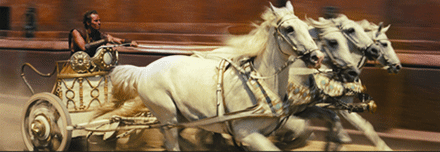
What driving on the wrong side of the road can teach us about export marketing
 ?Last week I was asked to take part in an online poll about whether we should change from left to right hand driving. The pollsters were no doubt motivated to take the population’s pulse following recent adverse publicity surrounding road crashes caused by foreign drivers. But it has also led to a flurry of calls for a change – “to bring us in line with the rest of the world.”
?Last week I was asked to take part in an online poll about whether we should change from left to right hand driving. The pollsters were no doubt motivated to take the population’s pulse following recent adverse publicity surrounding road crashes caused by foreign drivers. But it has also led to a flurry of calls for a change – “to bring us in line with the rest of the world.”
This highlighted for me the danger of assuming the one-size-fits-all (or possibly the my-size-fits-all) approach to global marketing; a condition which prevails in many businesses involved in exporting. Instead of looking carefully at the vagaries of other markets – or examining our preconceptions about other markets – we blithely assume we are right. I remember a story about a presentation in Tokyo by Lee Iacocca, then head of Chrysler. The great man asked why, despite Americans buying lots of Japanese cars, Japanese buyers weren’t returning the favour by buying American behemoths. A very polite Japanese journalist pointed out that the steering wheel of all American cars was on the wrong side.
Apparently this fundamental variance was a surprise to Iacocca. I can only guess that the “bring us in line” right-hand driving advocates have never driven in some of the world’s more populous countries like Japan, India, Pakistan, Bangladesh, Indonesia, Malaysia, not to mention the UK, or most of its former colonies – Australia, Hong Kong, Singapore, South Africa, Kenya, Tanzania and Guyana. Accounting for roughly 35-40% of the world’s population. In the process of researching the issue of driving on the “wrong” side, a number of interesting insights emerged. For instance, the reason that we drive on the left-hand side is because the ancient Romans did. The practice was adopted throughout the territories of the Roman Empire including Britain, whose example we have followed.
“Napoleon ordered his armies and the inhabitants of the countries he
invaded to keep to the right, simply because the English and the old aristocratic order didn’t”
How do we know that the ancients drove on the left? Archaeologists have deduced it from wheel-ruts found at old Roman quarries. The deepest, obviously cut by heavily laden wagons leaving the site, were on the left. Those on the right were shallower due to the returning wagons being empty. Why did Romans ride on the left? No one really knows, but it was probably to enable sword arms to be free if travelers encountered hostile strangers coming from the opposite direction. Another fascinating insight is that in the US the width between railway tracks is based on a horse’s arse, thanks to the Romans Why? The surge in railways construction in America was largely undertaken by English engineers and Irish navvies, who based the gauge on the tracks they had laid at home. The English gauge was determined by the coach-builders who built railway carriages using the jigs for building horse drawn trams, which in turn had their wheel width determined by the horse-drawn coaches they superseded. The coaches’ wheel width had been determined by the ruts etched in the earth by the hay wagons, which for centuries had followed the ruts already formed in the Roman roads by chariots, whose wheel-spacing was just a little wider than the chariot’s yoke, a measurement determined by the width of two horse’s rumps. So now you know.
Although until the 19th century small pockets of Europeans drove their carts on the right, it was Napoleon, the short stroppy Frenchman, who enforced the rule. He ordered his armies and the inhabitants of the countries he invaded to keep to the right, for the perverse reason that the English and the old aristocratic order didn’t. He regarded left-hand driving as a symbol of the past to be eradicated. This was further entrenched when the Americans, following their own revolution, eagerly embraced RHS driving. Thus about 60% of the world has ended up driving on the “wrong side of the road” – out of spite. Why is all of this important? It’s because we need to understand local rules and nuances if we expect our export strategies to succeed. Rules sometimes live forever; generations that come after tweak them incrementally. It’s systemic adoption, entrenched layer upon layer, year upon year, until these structures are too hard to change without resorting to revolution or tactical nuclear weapons. It is worth considering this when you think about introducing your oh-so-innovative product into a new market; are you sure it does not run counter to generations of entrenched wisdom? That’s the lesson for us as marketers: we should never take the cookie cutter approach and assume that one size fits all. Act global, but think local.×


